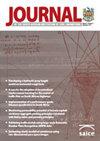交通安全与农村道路环境:综合道路条件对碰撞发生率的影响评估
IF 0.6
4区 工程技术
Q4 ENGINEERING, CIVIL
Journal of the South African Institution of Civil Engineering
Pub Date : 2022-12-13
DOI:10.17159/2309-8775/2022/v64n4a4
引用次数: 0
摘要
本研究旨在探讨纳米比亚国家农村道路的道路和交通特征对致命和严重伤害事故的综合影响。像非洲南部的许多其他国家一样,纳米比亚经历了大量严重的撞车事故,特别是在其农村公路网上。本研究采用广义泊松回归模型对研究数据集进行分析。研究结果表明,严重事故几乎总是受到多种因素的影响,而不仅仅是单一因素的存在。例如,在高阶道路上,交通流中重型车辆比例越高,对高严重性碰撞水平的绝对影响就越大,但当坡度、更宽的车道、有路面的肩部和更高的行驶速度同时存在时,这种影响就会加剧。在低阶道路上,交通流中轻型车辆的比例较高,对高严重性碰撞的绝对影响最大,而且在未铺设的肩宽更宽和运行速度更高的情况下,这种影响再次加剧。总的来说,更宽的车道宽度和更宽的未铺设的肩宽,特别是当两者同时出现时,与随后在高阶道路上发生的更严重的撞车事故有关。该研究得出结论,更安全道路的发展不依赖于简单地实施单个设计元素的最低安全标准,而是依赖于理解道路设计特征、交通参数和道路安全之间的关系,以认识到哪些巧合因素会影响不同类别道路的碰撞风险。这些知识可以导致更仔细的道路设计,从而减少碰撞的可能性。本文章由计算机程序翻译,如有差异,请以英文原文为准。
Traffic safety and the rural road environment: Assessing the impact of combined roadway conditions on crash incidence
This study was designed to explore the combinational effect of the roadway and traffic characteristics of national rural roads on fatal and serious-injury crashes in Namibia. Namibia, like many other countries in Southern Africa, experiences high numbers of high-severity crashes, particularly on its rural road network. The study applied Generalised Poisson regression models to analyse the study dataset. The results indicate that high-severity crashes are almost always influenced by a combination of factors, not simply the presence of a single factor. For example, on higher-order roads, a higher proportion of heavy vehicles in the traffic stream had the highest absolute impact on high-severity crash levels, but this effect was heightened when hilliness, wider lanes, surfaced shoulders and higher operating speeds were also present at the same time. On lower-order roads a higher proportion of light vehicles in the traffic stream had the highest absolute impact on high-severity crashes, and again this was compounded in the presence of wider unpaved shoulder widths and higher operating speeds. Overall, wider lane widths and wider unpaved shoulder widths, especially when found in combination with each other, were linked to a subsequent increase in higher-severity crash levels on higher-order roads. The study shows conclusively that the development of safer roads relies not on simply implementing minimum safety standards for individual design elements, but on understanding the relationship between features of road design, traffic parameters and road safety, to recognise which coincidences of factors affect crash risks on different classes of road. This knowledge can result in more careful road design so that crash likelihood is reduced.
求助全文
通过发布文献求助,成功后即可免费获取论文全文。
去求助
来源期刊
CiteScore
0.70
自引率
25.00%
发文量
19
审稿时长
>12 weeks
期刊介绍:
The Journal of the South African Institution of Civil Engineering publishes peer reviewed papers on all aspects of Civil Engineering relevant to Africa. It is an open access, ISI accredited journal, providing authoritative information not only on current developments, but also – through its back issues – giving access to data on established practices and the construction of existing infrastructure. It is published quarterly and is controlled by a Journal Editorial Panel.
The forerunner of the South African Institution of Civil Engineering was established in 1903 as a learned society aiming to develop technology and to share knowledge for the development of the day. The minutes of the proceedings of the then Cape Society of Civil Engineers mainly contained technical papers presented at the Society''s meetings. Since then, and throughout its long history, during which time it has undergone several name changes, the organisation has continued to publish technical papers in its monthly publication (magazine), until 1993 when it created a separate journal for the publication of technical papers.

 求助内容:
求助内容: 应助结果提醒方式:
应助结果提醒方式:


